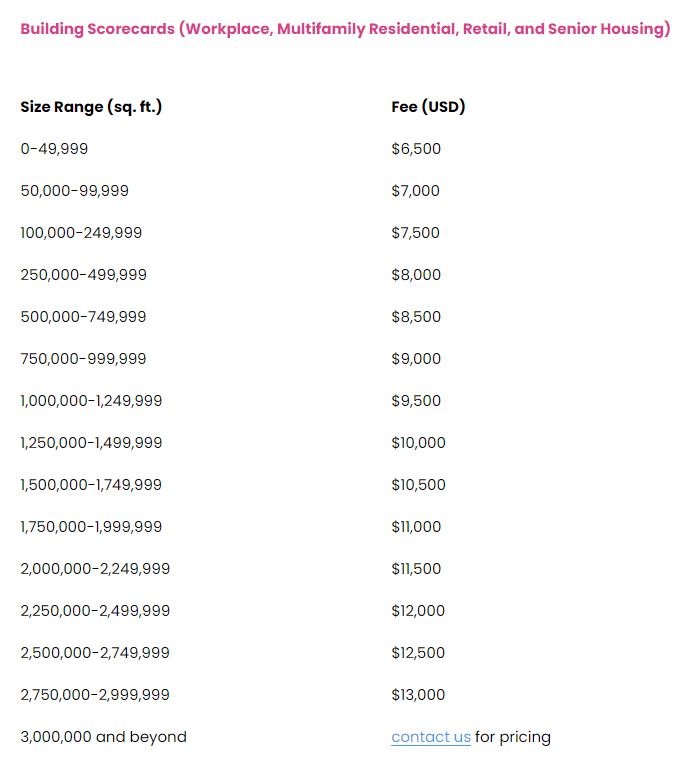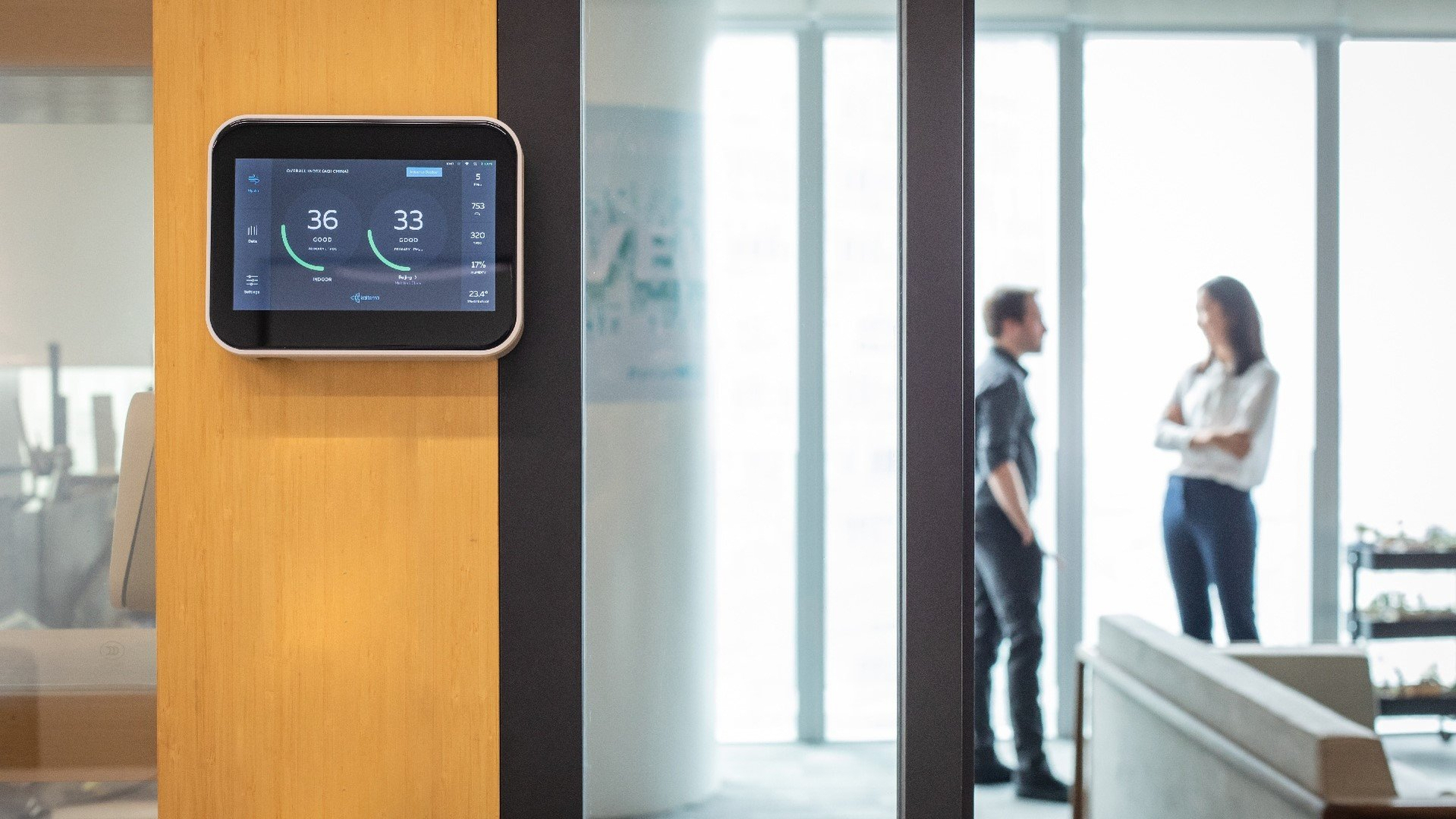Newsletter
In a marketplace that offers a wide variety of building standards, it can be difficult to decide which to go with. There’s no one-size fits all; however, there is almost certainly one that is right for you. In this article, we’ll compare two of the most popular building standards, WELL and Fitwel, to help you either decide between them, or lend insight into what factors to examine when shopping around.
We’ll start with a broad look at each standard, before digging down into what makes them different.
WELL - The Basics
The WELL standard was developed by the International WELL Building Institute (IWBI) to encourage the transformation of built environments in ways that promote health and wellbeing. The company followed up WELL v1 with WELL v2 and the WELL Performance Rating, both of which reward building designs and renovations that foster health and wellbeing.
WELL v2 comprises ten key concepts, including ‘Air’, ‘Water’, ‘Nourishment’, ‘Light’, ‘Movement’, ‘Thermal Comfort’, ‘Sound’, ‘Materials’, ‘Mind’, and ‘Community’. Each concept has preconditions that you must meet to achieve certification. Applicants must also work towards attaining a set of weighted optimizations in each concept to earn extra points. There are three levels of WELL v2 certification: silver, gold, and platinum. The more points you earn, the higher the level of certification.
Fitwel - The Basics
Like WELL, Fitwel rewards and verifies healthy building practices. The standard was developed by the General Services Administration (GSA) and US Centers for Disease Control and Prevention (CDC); while initially only serving federal buildings, Fitwel widened its scope to include non-federal commercial and residential buildings in 2016.
Those seeking Fitwel accreditation must have their building tested across twelve areas, including: building access, entrances and ground floor, stairwells, indoor environments, outdoor spaces, shared space, water supply, cafeterias and prepared food retain, vending machines, emergency procedures, and workspaces.
After an initial evaluation, Fitwel provides a scorecard detailing 63 suggestions for improvements. Once these are made, Fitwel will reevaluate the premises and provide a revised scorecard. As with WELL, there are three tiers of accreditation. The more points you earn in the accreditation process, the higher the tier you can reach.
What Sets These Standards Apart?
Fitwel and WELL share many attributes. Both aim to promote building health, both offer three tiers of accreditation, and both are accessible to owners of commercial and residential premises. However, this is where the similarities end. Let’s take a look at the important differences between these building standards.
Price
Expense is one of the most important factors to consider when choosing a building standard. As prices are largely determined by square footage, those with larger premises can be quickly priced out of certain standards. For instance, WELL is marginally more expensive than Fitwel for small premises, but the price differential increases exponentially with every square foot.
Initial registration with Fitwel costs $500, while WELL charges a loftier $3,000. While final certification for both standards begins at $6,500, this price diverges rapidly when considering larger premises - buildings of 1m sq ft cost $9,500 to certify with Fitwel, but $98,000 with WELL.
Essentially, WELL charges $0.16 per sq ft, and caps charges at $98,000. Industrial spaces are charged a lower rate of $0.08 per sq ft. Fitwel pricing uses a more complex grading system, working out at $0.009 per sq ft for larger projects.

(Image source: https://www.fitwel.org/certification/#pricing)
Bottom line: WELL is the more expensive of the two.
Differences in Approach: Comprehensiveness and Market Audience
The price difference between WELL and Fitwel reflects their individual focuses on slightly differing aspects of building health. The main difference is that WELL is more holistic, while Fitwel opt for a more practical, materials-based approach. These alternate approaches lead to different requirements for certification and different expenses incurred. They also lead to differences in timeline: Fitwel can take just twelve weeks to complete, while WELL certification typically takes six months.
WELL’s higher price reflects the standard’s emphasis on performance-driven onsite testing, which is much costlier to run than Fitwel’s offsite document uploading process. This performance-driven approach has lent WELL a reputation as highly rigorous, leading some of the world’s largest and wealthiest companies to attain the WELL standard to prove their dedication to healthy building to staff and clients. Some of these include: Citigroup, Honeywell, Investa, JPMorgan Chase, New York Yankees, T-Mobile, and Uber Technologies.
Fitwel is also extremely highly regarded. The standard is used by many large companies and, having been developed by the CDC and GSA, it bears the official stamp of the US government. However, it is less demanding than WELL, and might not require the same comprehensiveness when it comes to implementation. This can make Fitwel a more attractive option for those with larger or fast paced premises, where conditions are not as easily maintained, or those for whom time is of the essence.
Whichever you choose, you can leverage certification by showcasing your achievement to staff and clients, making your business a more attractive place to work or invest. Building standards will also prove useful during ESG reports, demonstrating your dedication to the ‘environmental’, ‘social’, and ‘governmental’ arenas concerned.
Bottom line: WELL is more rigorous, but Fitwel is faster.
Preconditions
One of the reasons that Fitwel certification is easier to attain than WELL is its lack of preconditions. WELL contains 24 preconditions across its 10 concept areas. If you can’t demonstrate each of these prerequisites, you simply can’t be accredited. For instance, one precondition under WELL states that you must provide indoor daylight exposure and outdoor views. If you can’t do this, you are ineligible for WELL certification.
Fitwel has no preconditions, and therefore, if you can’t make a certain change - such as providing outdoor views - it’s not the end of the world. You will be able to compensate by making changes in other areas. For this reason, Fitwel is the more flexible of the two options for those working under certain practical constraints.
Bottom line: Fitwel has no preconditions, while WELL has 24.
Inspection and Certification
Fitwel and WELL also differ hugely in terms of how inspection and evaluation take place. WELL, in general, has a much more rigorous approach, partially explaining the differences in both price and prestige.
Fitwel certification requires no onsite visits or performance testing. Instead, all evaluation takes place through a user-friendly online portal, where photographs and documentation are uploaded to demonstrate the condition of your building. Once Fitwel has assessed these conditions, you are provided with 63 suggestions for improvements, and must upload evidence of attaining some of these if certification is to be issued.
Unlike many other standards, you do not need annual reevaluation to prove that these conditions are maintained. Fitwel certification lasts for three years, at which point you must reapply. You can avoid a lapse in certification by reapplying at any time before the initial three ends.
WELL certification is more demanding. The standard utilizes a combination of technical documents, letters of assurance, ongoing data reports,, onsite performance testing, and real-time monitors to determine whether you meet the required threshold of preconditions and optimizations. At least 2.5% of the floor space must be made available for performance testing, including every common area.
If your WELL project fails to meet the required preconditions and optimizations, you can make improvements and request another round of inspection. The WELL v2 standard lasts for three years, at which point you need to be retested. However, many WELL features also require annual reporting, where you must provide documents that show the standard is being maintained.
Once WELL accredited, the project receives the official award letter, a WELL certification plaque, and template marketing materials.
Bottom line: WELL certification requires onsite visits, and is more demanding than Fitwel’s portal-upload approach.
How Do These Standards Deal with IAQ?
Since the COVID-19 Pandemic, IAQ has formed an increasingly vital part of almost all building standards, and Fitwel and WELL are no exceptions. Let’s take a look at the different ways that these standards relate to air quality and IAQ monitors.
WELL v2 and IAQ
In WELL v2, IAQ is crucial for certification. ‘Air’ is the first listed of the ten key concepts, containing 4 preconditions and 10 possible optimizations, which offer a total of 18 points. Thermal comfort, which directly relates to air quality, offers a further 16. These 34 IAQ-related points form a huge part of the standard - enough to bridge the gap between bronze (40) and gold (60) awards, or even from silver (50) and platinum (80).
One key way to achieve many of these optimizations is through continuous IAQ monitoring with a monitor like the Kaiterra Sensedge Go. Before, WELL projects could only use IAQ monitors to meet some of the requirements in the ‘Air’ concept — they also had to pay for performance testing because no IAQ monitor could measure all of the parameters required by the ‘Air’ concept precondition A01.
However, since the launch of the Sensedge Go, WELL projects no longer need to conduct any performance testing for air, as the device measures every required parameter in A01 in addition to A03 and T01. The Sensedge Go not only satisfies these three preconditions but can also achieve seven points across the ‘Air’ concept and two in ‘Thermal Comfort’, for a total of nine optimization points.
Read here to learn more about a detailed breakdown of the requirements in WELL and how air quality monitors help earn WELL certification.
Fitwel and IAQ
Like WELL, almost all Fitwel project types can earn points through air quality improvements and monitoring. However, given that Fitwel is a less comprehensive standard, with fewer optimizations available, there are fewer IAQ related strategies at hand. As with WELL, IAQ monitoring can be used to unlock several of these strategies. Let’s take a brief look at how this can be achieved.
Creating an indoor air quality policy (6.3): Strategy 6.3 requires the building to incorporate an IAQ policy at least as rigorous as Fitwel’s, and is worth between 2.52 and 2.88 points. IAQ monitors can form a large part of this strategy, signaling when certain issues need to be addressed or evacuations ordered.
Testing or monitoring air quality (6.4): Strategy 6.4 requires air testing or monitoring after renovation and occupancy, and not exceeding certain thresholds of PM2.5, CO2, TVOCs, CO, formaldehyde and relative humidity. Continuous IAQ monitors are a far more cost-effective way to achieve this strategy than onsite testing.
Reporting air quality test results to the building’s regular occupants (6.5): Strategy 6.5 requires data from air tests or IAQ monitors to be available to building occupants. A wall-mounted monitor with a display screen, such as the Sensedge, is a simple way to achieve this strategy.
Bottom line: WELL and Fitwel projects both stand to gain many points through IAQ monitoring.
Keep Your Standards High
Whether you choose Fitwel or WELL depends on a huge variety of factors. Price, prestige, preconditions, the inspection and certification process, and areas of focus all must be taken into account. For those looking for a quick, cost-effective standard, Fitwel will likely be sufficient. However, if you’re looking to ensure your premises meet the highest standards of building health, and have additional resources to invest, WELL may provide the solution.
Learn more about Kaiterra’s air quality solutions for building certifications like WELL and Fitwel, or get in touch with our experts to learn more about getting your building certified:






.png?width=200&height=148&name=Menu%20C%20(2).png)

.png?width=307&height=228&name=Menu%20-%20D%20(1).png)
.png)





